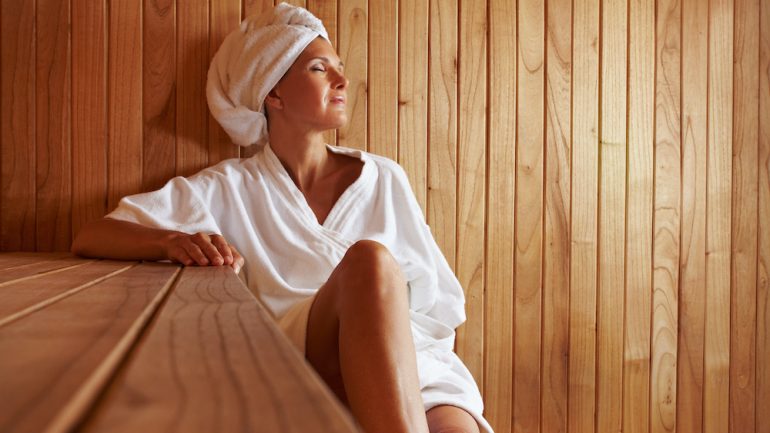Relaxing in a sauna at a fitness center may make you wonder about owning one at home. Here are the pros and cons of adding a home sauna.
Benefits of a home sauna
Perhaps the biggest benefit of a home sauna is stress relief. Whether you install a dry heat sauna or one with steam, a home sauna’s warmth can help you to unwind after a hectic day and relax those tight muscles.
Sauna enthusiasts claim saunas provide numerous additional health benefits, such as better breathing, improved circulation, endorphin release, improved sleep, and even weight loss. Sauna can be hazardous for people with heart disease or pregnant women, however, so be sure to check with your physician before installing one.
Limit your time in a sauna to 20 minutes maximum, as staying longer risks dehydration from excessive sweating and potential heat exhaustion. Avoid drinking alcohol while in the sauna, which can accelerate dehydration.
Does a home sauna add value to your house? A sauna is an unusual feature that will be attractive to some buyers and not to others. The location and whether it disrupts your home’s floor plan will affect how potential buyers view it.
Drawbacks to home saunas
Home saunas that are added later, rather than being part of the home’s original design and construction, will take up living space. Whether it’s a steam or dry type, your home sauna will increase your energy bill unless it burns wood to create heat. Saunas require maintenance, particularly regular cleaning to avoid mold and mildew growth.
Types of saunas
Saunas fall into two major categories: those with dry heat and those with wet heat or steam. Within those categories there are differences in how the heat is generated.
In wet saunas, steam comes from water that is heated to the boiling point. Typically, the wet home sauna heats rocks in a steel cage to a high temperature and then pours water over them to emit steam. You can convert an existing shower into a steam sauna. An advantage to such a renovation is that it changes an existing space into a home sauna rather than potentially disrupting your floor plan with a new space.
Dry saunas generate heat in several ways. With a traditional Finnish smoke sauna, a fire burns in a stove with no chimney, which fills the room with smoke and heat. The fire is allowed to die, the smoke is vented, and the residual heat of the stove maintains heat in the sauna. Similar to a steam sauna, the heat of a dry sauna also can come from hot rocks without using water. A third method, the infrared sauna, has soared in popularity in recent years. These home saunas use infrared light to heat the users’ bodies rather than heating the room.
Portable
You don’t have to undertake a remodeling project to have a sauna. Durable portable models for either indoor or outdoor use are available starting at around $1,000.
Related – Fitness Training Comes Home


